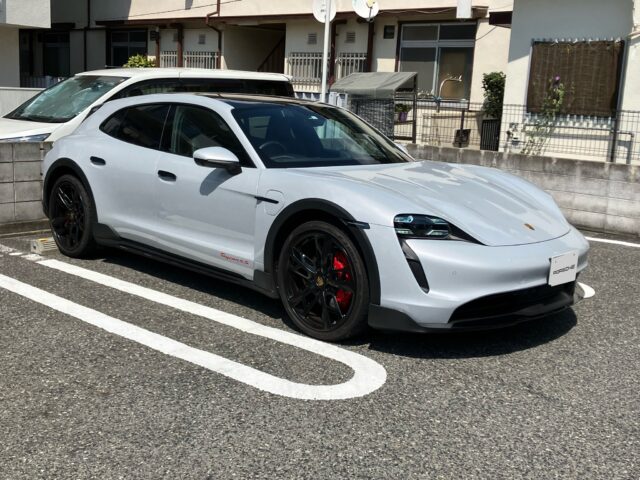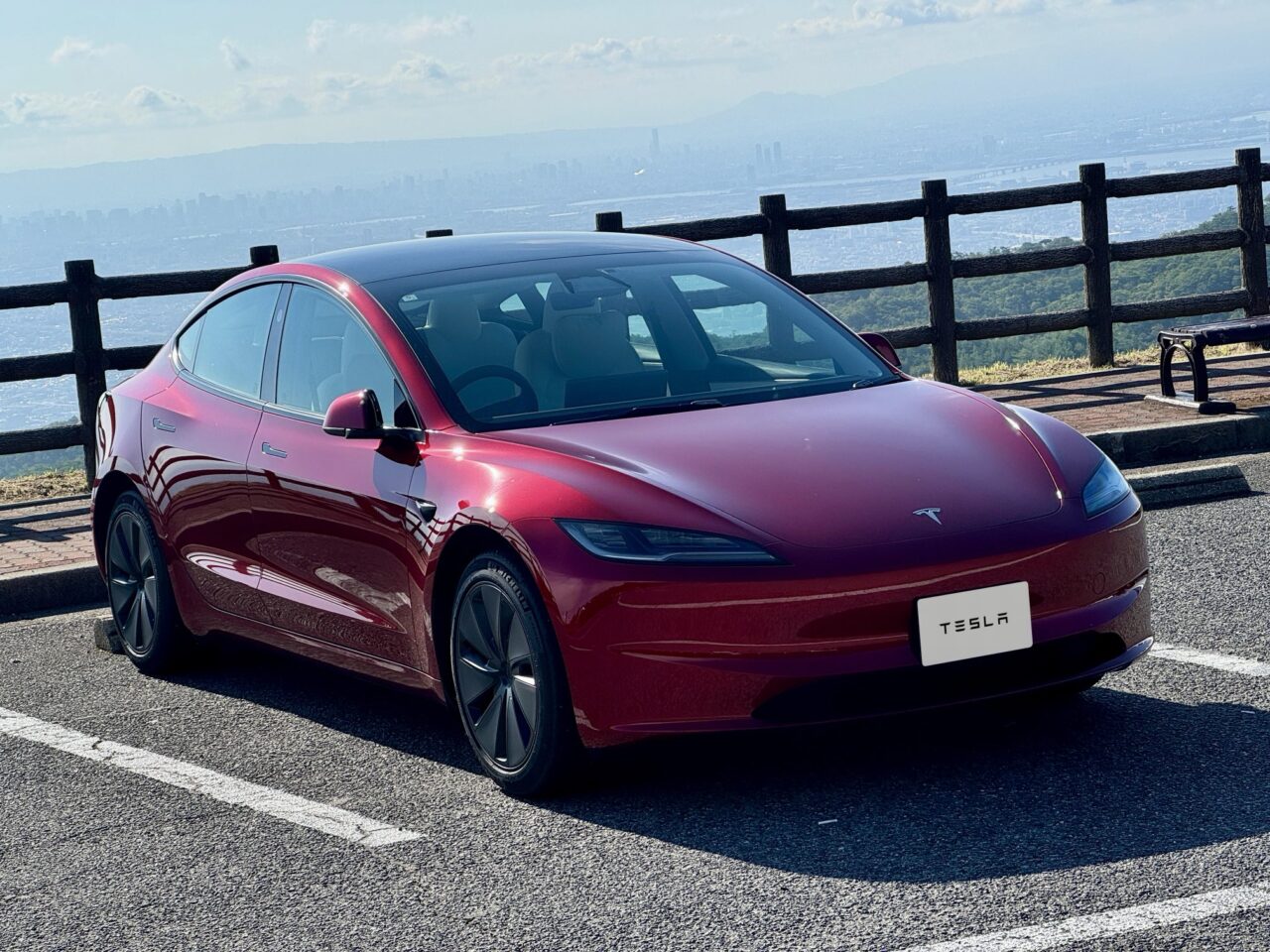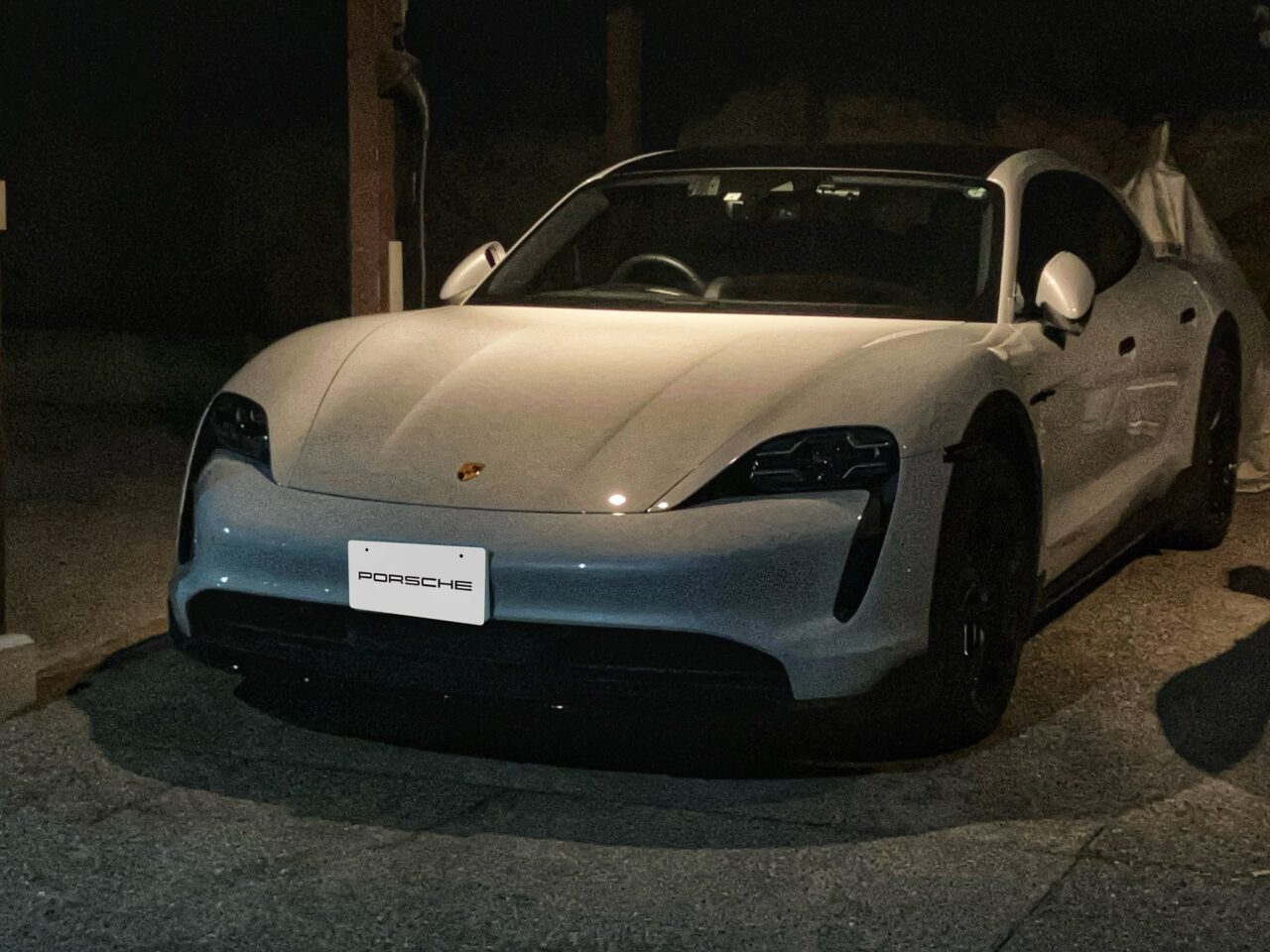Long-Distance Driving in an EV? Busting Common Myths from an Owner’s Perspective
公開日:

I often hear people say, “But electric cars can’t really handle long distances, right?” when I talk about the Taycan or Model 3.
They worry, “The battery will gradually run out while driving, and I might get stranded somewhere (lol)… Gas stations are everywhere, so that’s no problem, but charging spots for EVs aren’t as common, so long trips feel scary.”
I think, “No way anyone drives without planning ahead like that,” but still,
“You can actually drive quite far. Both Tesla Model 3 and Porsche Taycan can handle long distances comfortably. Our Taycan can go about 370 km on a full charge, and when we drove from home to Fuji Speedway—about 450 km one way—we only charged once along the way. That was a quick 90 kW fast charge for 30 to 60 minutes, which finished while we had lunch. It’s really no big deal.”
Even so, I sometimes hear, “Yeah, but if you get stuck in traffic, the battery will drain fast and that’s scary. Gasoline feels more reliable.” It’s clear that misconceptions about EVs run deep.
So, in this article, I want to clear up some of these common misunderstandings (lol).
コンテンツ
Clearing Up Misconceptions About Electric Vehicles
Let’s address these misunderstandings one by one.
① The driving range is too short
This is a common argument. There are many fuel-efficient gasoline cars nowadays, and our previous car, a Mercedes-Benz GLB200d, could run about 700 km on a full tank, so compared to that, EVs do have a shorter range.
But, the Taycan can go about 370 km on a full charge, and the Model 3 can manage around 550 km.

I once drove a Tesla Model 3 from Hyogo Prefecture to Toba in Mie Prefecture—a round trip of about 670 km—and the battery was still about 50% when I arrived at the hotel. I had confirmed the hotel had a regular charging station, so I charged there overnight, and by morning it was back to 100%.
On the way back, I didn’t charge once and still arrived home with about 20% battery left.
Of course, longer range is always better, but I don’t think situations where “even this range isn’t enough” come up very often.
Also, with EVs, battery drain during traffic jams is actually less (gasoline cars clearly consume more). I’ve heard rumors that in freezing winter traffic jams the battery drains quickly, but since I got my Taycan in January this year and have experienced some traffic, I haven’t felt that at all.
Plus, EVs have regenerative braking, so while the battery drains going uphill, it recovers charge going downhill. This is something gasoline cars don’t have, and when crossing mountains, you might be surprised how little the battery actually drops.
② Charging infrastructure is insufficient
Compared to gas stations, EV charging spots are fewer and the infrastructure isn’t perfect yet. But currently, there are over 21,000 charging locations (as of the end of August, according to GoGoEV), including fast chargers, regular chargers, and Tesla Superchargers. Not all are usable everywhere and availability varies by region, but the number is definitely growing.

Image source: https://ev.gogo.gs/news/detail/1725239618/
The GoGoEV site also notes:
August, which saw many natural disasters, became an opportunity for local governments to review disaster response. EVs, which can serve as storage batteries, play an important role in disaster prevention, so promoting EV adoption and improving charging infrastructure is expected as part of local disaster preparedness.
With the government aiming for all new cars sold by 2035 to be electric, infrastructure development should continue to improve.
Also, since EV adoption in Japan is still relatively low, charging spots are often not crowded. Especially on highways, many charging stations have multiple chargers, and in my experience, I’ve never had to wait to charge.
③ Charging takes too long and is inconvenient
Charging isn’t like filling up at a gas station in 3 to 5 minutes. The Taycan’s battery capacity is 90 kWh, so charging from zero to full at 90 kW fast charging takes about an hour (though it’s rare to start from zero).
That sounds long, but if you charge while having lunch at a highway service area, the battery will be ready by the time you finish eating. Also, in Osaka, some parking lots offer free 200V regular charging, which is usually available, so if you charge while parked, your battery will be replenished by the time you return.
Gas stations feel like a place you “have to go out of your way to refuel,” but thinking about EVs that way makes it seem troublesome. With EVs, it’s more like “charging while parked anyway,” like charging your smartphone when you’re not using it.
If you change your mindset, it’s really not inconvenient at all.

In that sense, having a regular charger installed at home is very convenient, making daily use feel just like charging your phone. If you can’t install a charger at home, it might be a bit less convenient, but if you park regularly at a place with charging facilities, it shouldn’t be a big problem.
④ Driving performance is inferior to gasoline cars
When I say I drive a Tesla, people often say, “Electric cars don’t drive that well, right? They’re eco-friendly, but gasoline cars still have better driving performance.”
At those times, I usually respond with some pressure, “No way… try driving one first. The performance of EVs is truly amazing. You’ll be surprised.” (lol)
I haven’t driven every EV brand, but speaking from experience with just the Taycan and Model 3, their ride comfort is exceptional.
They’re smooth, without jolts (though the Taycan’s suspension is stiff, so it can feel rough on some roads), and truly luxurious and pleasant.
The stability and acceleration are also fantastic. EVs deliver instant torque, so merging onto highways or overtaking is suddenly very fast. Between the two, the Model 3 actually feels quicker in terms of acceleration that pins you to the seat.
That sensation can’t be experienced in a gasoline car, and once you feel it, you get hooked. The Taycan, developed aiming to rival the 911, also offers excellent sports car handling, delivering the true Porsche driving experience.
With great comfort and performance, I actually prefer driving EVs on long highway trips—it’s stress-free. (Of course, that’s a matter of personal preference.)
But this feeling can’t be understood just by reading or watching test drive videos.
You have to experience it yourself, so I really recommend taking a test drive (I’m not a salesperson, by the way lol).
I wish I’d owned one sooner…!
Misconceptions about EVs are still widespread.
But in reality, over the past few years, range, charging infrastructure, charging time, and driving performance have all advanced far beyond expectations. New technologies always take time to be accepted, but once you own one, you’ll probably think, “I wish I’d gotten one sooner…”
Actually, a friend recently said they want to try an EV, so I’m planning to take them for a ride. I hope to spread the word about how wonderful EVs are, even if just at a grassroots level.
このブログが気に入ったらフォローしてね!


Comment ( 0 )
Trackbacks are closed.
No comments yet.